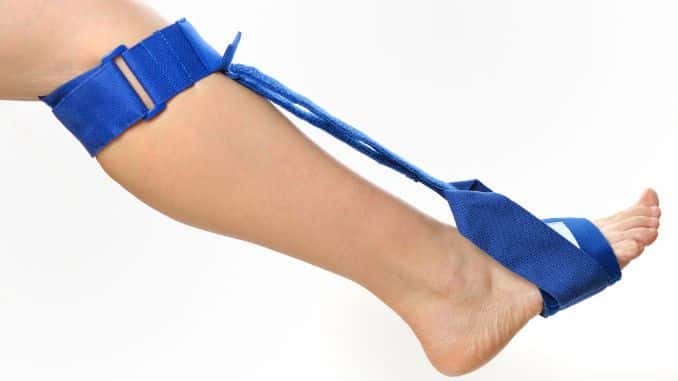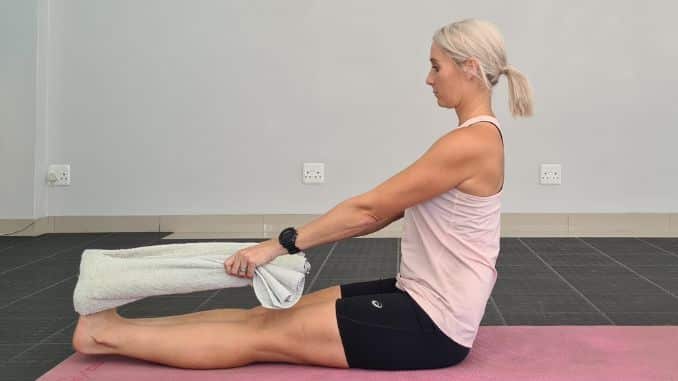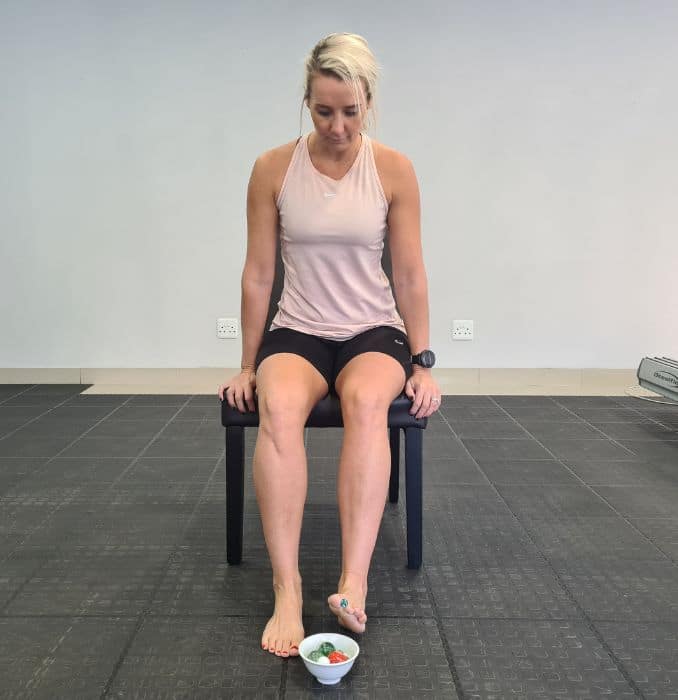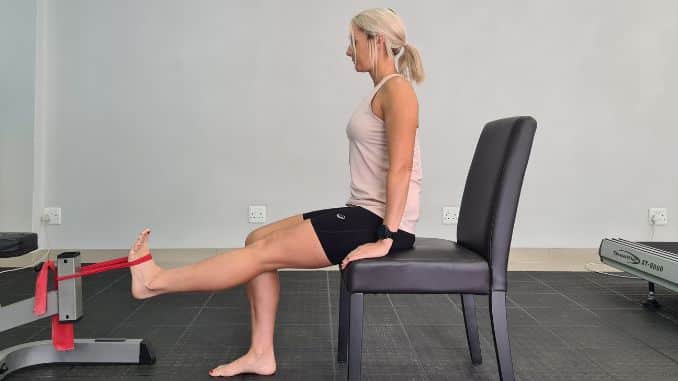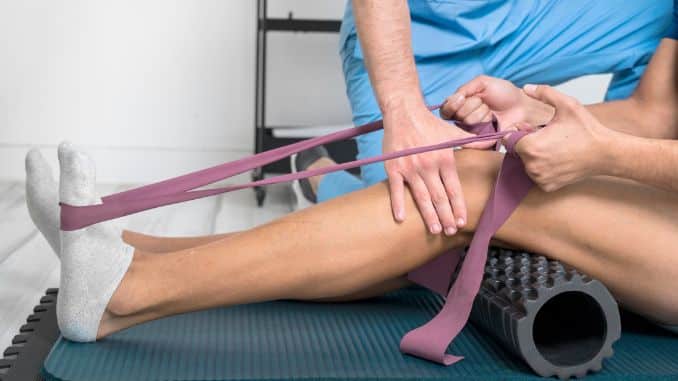
Foot drop, sometimes called drop foot, is a general term for difficulty lifting the front part of the foot. Foot drop isn’t a disease. Rather, foot drop is a sign of an underlying neurological, muscular, or anatomical problem. Sometimes foot drop is temporary, but it can be permanent. If you have a foot drop, you should wear a brace on your ankle and foot to hold your foot in a normal position. Read on to know more about Foot drop as well as some Foot Drop Exercises.
Clinical Relevant Anatomy Of Foot
The tibialis anterior, extensor digitorum longus, and extensor hallucis longus are the muscles responsible for dorsiflexing the ankle and foot. These muscles are important in clearing the foot during the swing phase of gait (walking) and controlling plantar flexion of the foot during heel strike.
This group of muscles receives its nerve supply from the common peroneal nerve, which is a smaller and terminal branch of the sciatic nerve. This nerve comprises the posterior division of L4, L5, S1, and S2. You can locate these nerves by palpating or pressing behind the head and along the neck of the fibula
Damage to the common peroneal nerve typically leads to weakness in the tibialis anterior and other key dorsiflexors of the foot, regardless of whether the root cause is neurological, muscular, or anatomical.
Foot Drop Causes
An injury to a nerve that runs down your leg and controls the muscles that lift your foot is the most common cause of foot drop that can be caused by:
- Sports injuries
- A slipped disc in the spine
- Crossing your legs, kneeling, or squatting for long periods of time
- Problems with your nerves (peripheral neuropathy) caused by diabetes
- Hip or knee replacement surgery
- Not moving for a long time (for example, if you’re staying in a hospital)
Eventually, foot drop can get better on its own and with treatment, but there are also cases that it can be permanent.
Meanwhile, here are the less common causes of foot drop:
- Inherited conditions like Charcot-Marie-Tooth disease
- Muscle weakness caused by muscular dystrophy, spinal muscular atrophy, or motor neuron disease
- Damage to the brain or spinal cord caused by a stroke, cerebral palsy, Parkinson’s disease, or multiple sclerosis
Early Signs And Symptoms
Early symptoms that may be associated with drop foot are trips, falls, and changes in gait.
And a few of the most common early signs of drop foot include:
- Decreased muscle mass
- Frequent trips or falls
- The limpness of the foot
- Loss of sensation in the leg or foot
- Changes in gait, such as raising your leg higher or swinging your leg to the side when walking
How Is Foot Drop Diagnosed?
Your Healthcare Provider will perform a complete physical examination. They may find a significant loss of muscle control in your leg/s and foot/feet and leg/foot muscle atrophy.
In addition to these, they may also perform the following tests to find the underlying cause of the foot drop:
- Imaging tests such as X-rays, ultrasound, and MRI Scans to check for damage in your legs, spine, or brain.
- Blood tests such as blood sugar tests to check for diabetes and related neuropathy.
- Nerve conduction tests to check if your nerves are functioning well.
- Electromyography to check the electrical activity of your leg muscles. Both nerve conduction tests and electromyography are important in finding where the problem in the nerve is.
Treatment
Treatment for foot drop requires treating the underlying medical condition that caused it.
Several treatments can help with foot drop:
-
Surgery
If a pinched nerve or herniated disc causes your foot to drop, you will likely have surgery to treat it. Surgery may also be necessary to repair muscles or tendons if they are directly damaged and are causing foot drop. In severe or long-term cases, you might have surgery to fuse your ankle and foot bones and improve your gait.
-
Functional Electrical Stimulation
If your foot drop is caused by damage to the peroneal nerve, then Functional Electrical Stimulation may be an alternative to surgery. A small device can be worn or surgically implanted just below the knee that will stimulate the normal function of the nerve, causing the muscle to contract and the foot to lift while walking.
-
Braces Or Ankle Foot Orthosis (AFO)
Wearing a brace or AFO that supports the foot in a normal position is a common treatment for foot drop. The device will stabilize your foot and ankle and hold the front part of the foot up when walking. While traditionally, doctors have prescribed bulky stiff splints that go inside the shoe; the SaeboStep is a lightweight and cost-effective option that provides support outside the shoe.
Foot Drop Exercises
Specific exercises that strengthen the foot, ankle, and lower leg muscles can help improve the symptoms of foot drop in some cases. Exercises are important for improving range of motion, preventing injury, improving balance and gait, and preventing muscle stiffness.
Here are some helpful exercises for foot drop:
1. Towel Stretch
Sit on the floor with both legs straight out in front of you. Then, loop a towel or exercise band around the affected foot and hold onto the ends with your hands. After that, pull the towel or band toward your body. Hold for 30 seconds. Then relax for 30 seconds. Repeat 3 times.
2. Toe-To-Heel Rocks
Stand in front of a table, chair, wall, or another sturdy object you can hold onto for support. Then, rock your weight forward and rise up onto your toes. Hold this position for 5 seconds. Next, rock your weight backward onto your heels and lift your toes. Lastly, hold for 5 seconds. Repeat the sequence 6 times.
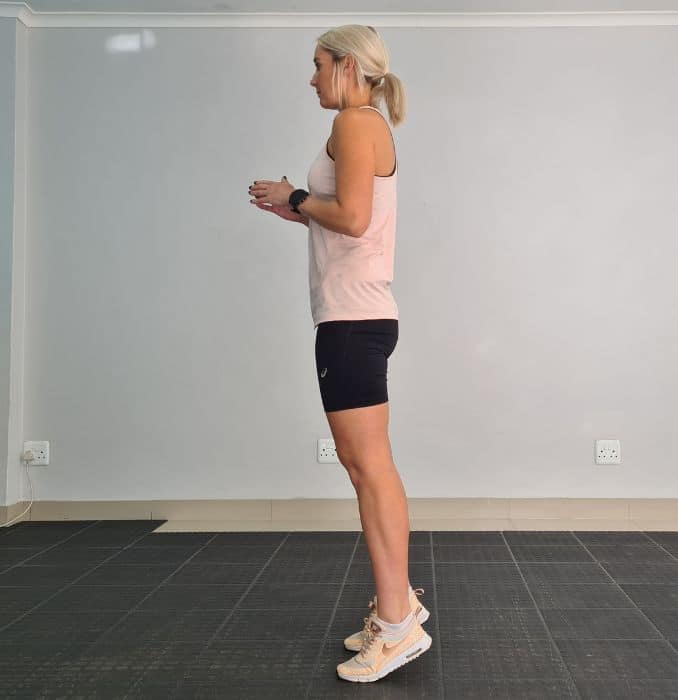 |
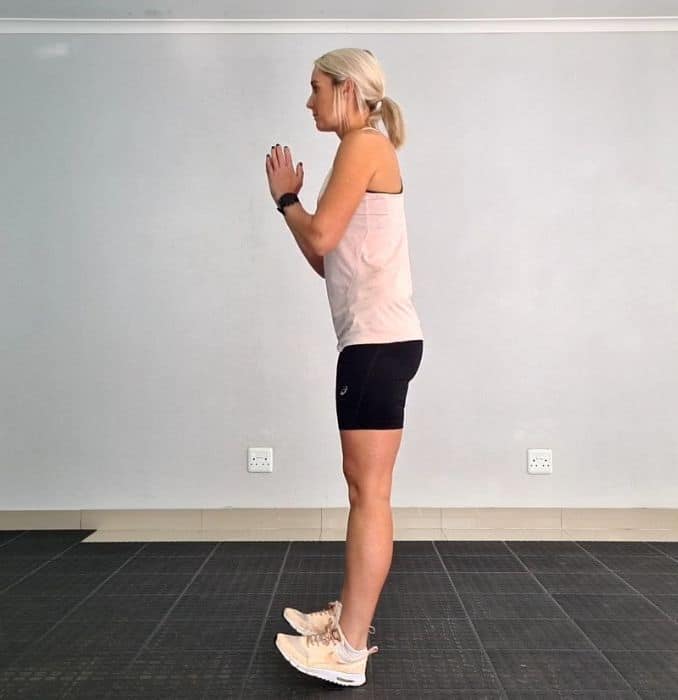 |
3. Marble Pick Up
Sit in a chair with both feet flat on the floor. Then, place 20 marbles and a bowl on the floor in front of you. After that, using the toes of your affected foot, pick up each marble and place it in the bowl. Lastly, repeat until you have picked up all the marbles.
4. Assisted Toe Raises
Sit on the edge of the chair. Then, place your affected foot on top of your unaffected foot. After that, using your unaffected foot, slowly lift it into toe raises before returning it to the starting position. Lastly, complete 10 repetitions, 1 set.
5. Seated Heel Raises
Firstly, sit on the edge of the chair. Secondly, place your feet flat on the floor. Now point your toes down while lifting your heels off the floor. Fourthly, make sure to keep proper neutral foot alignment and press down on your 1st and 2nd toes. Then, you should feel the muscles in your calf and lower back of the leg contracting. Lastly, complete 10 repetitions, 1 set.
5. Ankle Dorsiflexion
Sit on the floor with both legs straight out in front of you. Then, take a resistance band and anchor it to a stable chair or table leg. After that, wrap the loop of the band around the top of your affected foot. Finally, slowly pull your toes towards you, then return to your starting position. Repeat 10 times.
6. Passive Ankle Dorsiflexion
Sit on the edge of the chair. Then, cross your affected leg over your other leg. After that, place your affected ankle over your unaffected thigh. And then, using your non-affected arm, move your foot into dorsiflexion by pulling it towards your shin bone, then return it to the starting position. Lastly, complete 10 repetitions, 1 set.
7. Passive Ankle Ankle Adduction/Abduction
Sit on the edge of the chair. Then, cross your affected leg over your other leg. After that, place your affected ankle over your unaffected thigh. Using your unaffected arm, move your foot side by side, then return it to the starting position. Lastly, complete 10 repetitions, 1 set.
8. Plantar-Flexion
For this Foot Drop Exercises, sit on the floor with both legs straight out in front of you. Take a resistance band and wrap it around the bottom of your foot. Hold both ends in your hands. Slowly point your toes, then return to your starting position. Repeat 10 times.
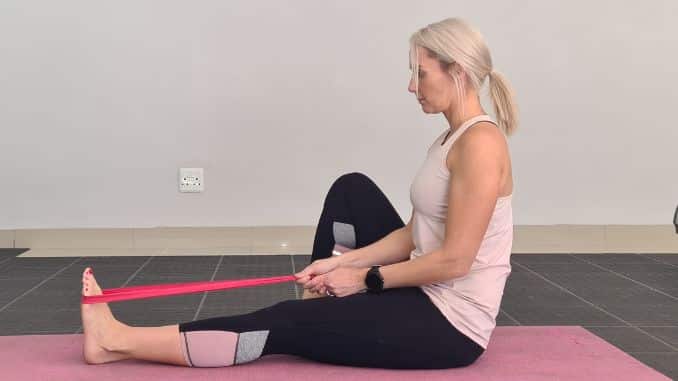 |
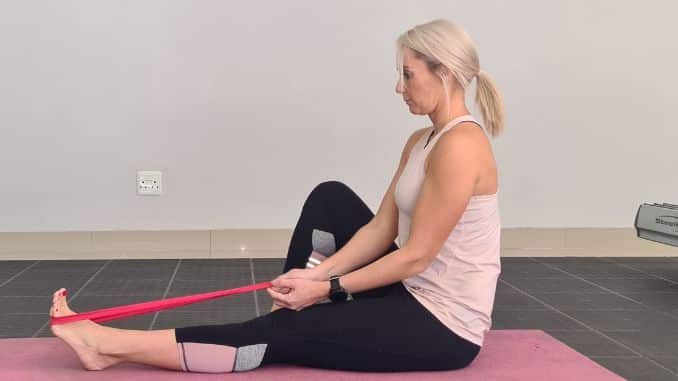 |
9. Ball Lift
Sit in a chair with both feet flat on the floor. Place a small round object on the floor in front of you (about the size of a tennis ball). Hold the object between your feet and slowly lift it by extending your legs. Hold for 5 seconds, then slowly lower. Repeat 10 times.
Other Considerations
Aside from the mentioned treatment options, the following precautions are also important because foot drop can increase your risk of tripping and falling:
- Keep all floors clear of clutter.
- Avoid the use of throw rugs.
- Move electrical cords away from walkways.
- Make sure rooms and stairways are well-lit.
- Place the fluorescent tape on the top and bottom steps of the stairways.
Signs Of Healing
Recovering from a drop foot will vary depending on the specific cause and injury severity to the associated nerves. Nerve injury would take around 3 months to recover from, while neuron loss caused by MS may take 12 months. Some nerves may never fully heal, causing the issue to become permanent.
Here are potential signs that you are healing:
- Improvements in balance
- Increased strength or muscle mass
- Reduced numbness
- Decreased stiffness
Don’t let foot drop affect your mobility, independence, and quality of life. With proper rehabilitation and assistive devices, many people can overcome the underlying cause of their symptoms and get back to walking normally. If you are showing symptoms of foot drop, talk to a medical professional about your treatment options.
Discover How to End Your Chronic Pain with an Extensive List of 90-Second Pain Fixes so You Can Go Back to Living A Happier, Active, and Pain-Free Life. Check out our The Pain Hacker DVD now!

